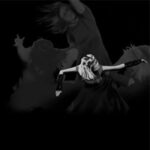From childhood ballet classes to the vibrant rhythms of samba, my dance journey has been one of unexpected discovery and personal growth. Like many, my first foray into dance was at a young age with ballet lessons at the local recreation center. I have faint, yet fond memories of learning ballet positions, the feel of pink ballet slippers, and practicing routines with classmates. However, those early classes were short-lived, and dance remained largely on the periphery of my life until recently. Growing up, shyness kept me off the dance floor at social events. My dance repertoire was limited to simple line dances, a common experience for many. Yet, I felt a pull towards the rich dance traditions of Latinx culture, encompassing styles like Folklorico, Bachata, Salsa, and Samba. The desire to connect with this part of my heritage grew stronger as I got older, but my self-consciousness held me back. The assumption that everyone else was a naturally gifted dancer, having started younger, was a barrier I placed in my own path.
This changed when friends shared their enthusiastic experiences in a Capoeira Angola class within the dance department. Intrigued, I watched performances that included other dance styles, most notably samba. The energy and vibrancy of samba sparked something within me.
Fueled by my friends’ positive experiences and their plans to enroll in samba classes, I decided to take the plunge. I contacted the professor, requested a spot on the waitlist, and to my delight, I was accepted. This class proved to be far more enriching than I could have imagined, challenging the common misconception of dance courses as merely supplemental or lacking academic rigor. Meeting three times a week, the samba class was a blend of physical practice and intellectual exploration. Mondays and Wednesdays were dedicated to movement, learning the fundamental steps and rhythms of Samba Dancing. Fridays took a different turn, delving into the academic side of dance. We engaged in discussions based on assigned readings, podcasts, and films, exploring how cultural knowledge is embodied and transmitted through movement. We learned about the captivating history of samba, its deep roots in Brazilian culture, and its global impact. These discussions ventured into complex topics such as the nuances of race in Brazil compared to the United States, the harmful stereotypes of fetishization and exoticism often imposed on Latinx communities, and the dynamic evolution of samba as it journeyed across borders. Initially drawn to the class to learn the steps of samba dancing, I discovered a profound appreciation for its historical and cultural context. The academic study of dance was a revelation, an entirely new perspective I hadn’t encountered before. Even the final project, a research proposal and presentation, became an engaging experience. I chose to explore the foreign perception of Brazil and the significant role of Carnaval in shaping that image. It was fascinating to realize how my background in economics provided a unique lens through which to analyze cultural phenomena, even in a dance context. Other presentations explored diverse facets of samba, from the origins of its vibrant costumes to representations of gender identity and expressions of race within the dance form.
Beyond the structured curriculum, the samba dance class offered unexpected personal lessons. For years, the idea of performing in front of others, even friends and family, filled me with dread. Yet, participation in the end-of-semester dance performance was a course requirement. Knowing my friends would be in the audience, I felt a wave of nervousness as the performance date approached. However, once on stage, that fear dissipated. Performing wasn’t as daunting as I had imagined. There was a sense of vulnerability in stepping outside my comfort zone and dancing in front of a crowd for the first time, but the supportive atmosphere made it a positive experience. Most importantly, I realized something fundamental: I genuinely enjoy samba dancing. In the past, my tendency was to give up quickly if I didn’t achieve immediate mastery in a new activity. However, knowing that withdrawing from the samba class would result in a “W” on my academic transcript, I was committed to persevering, even when I felt clumsy or awkward. I had to attend class, practice, and push through the initial discomfort to improve my samba skills. Despite past tendencies towards inconsistent attendance in other areas, I found myself consistently showing up for samba class. And I noticed progress. From the first hesitant steps to the final performance, I could feel my samba improving. It’s not always easy to recognize personal growth in the daily routine of life, but in samba class, the improvement was tangible and rewarding. I am immensely grateful for the opportunity to have taken a dance class, especially samba dancing, at Oberlin. It was a reminder of the rich academic history and diverse offerings within the institution. Even if a particular subject or department seems outside your usual interests, venturing beyond your comfort zone and taking an unfamiliar course can lead to unexpected discoveries, both academically and personally. You might just find a new passion, and perhaps, like me, you’ll discover the joy of samba dancing.


